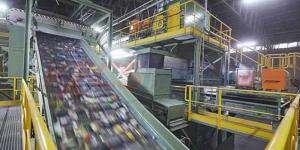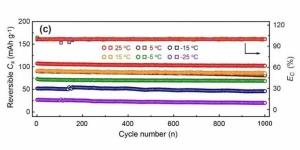Are sodium ion batteries recyclable
Are Sodium Ion Batteries Recyclable? Unpacking Their Environmental Potential
In the quest for sustainable energy storage solutions, sodium ion batteries stand out due to their promising characteristics, which potentially offer a more environmentally friendly alternative to traditional lithium-ion batteries. This detailed article examines the recyclability of sodium ion batteries, elaborates on the specific processes involved in their recycling, and explores the role of Himax Electronics in enhancing these processes to support global sustainability efforts.
Introduction to Sodium Ion Battery Technology
Sodium ion batteries represent a significant advancement in battery technology, leveraging the abundant element sodium to create energy storage solutions that are both effective and environmentally conscious. Unlike their lithium-ion counterparts, sodium ion batteries utilize sodium ions to transfer electrical energy, which offers unique advantages due to sodium’s physical and chemical properties.
-
Chemical Properties and Benefits:
-
Abundance of Sodium: Sodium is one of the most abundant elements on Earth, found extensively in the Earth’s crust and in seawater. This abundance ensures a steady and secure supply, reducing the geopolitical and environmental issues associated with the mining of rarer minerals like lithium.
-
Lower Environmental Impact: The extraction of sodium, especially from saltwater, is less invasive and damaging than the mining required for other battery minerals. This process typically results in lower emissions and has a smaller ecological footprint, making sodium ion batteries a more sustainable choice.
-
Cost Advantages: The ready availability of sodium also contributes to lower material costs for sodium ion batteries. These cost savings can be passed along through the supply chain, resulting in more affordable energy storage options for consumers and industries.
-
-
Technical Advantages and Challenges:
-
Energy Density and Efficiency: While sodium ion batteries currently offer lower energy density compared to lithium-ion batteries, ongoing research is rapidly closing this gap. Improvements in cathode materials and electrolyte formulations are enhancing the efficiency and capacity of sodium ion batteries.
-
Thermal Stability and Safety: Sodium ion batteries generally exhibit better thermal stability than lithium-ion batteries. This stability reduces the risk of thermal runaway and makes sodium ion batteries safer in applications where high temperatures might occur.
-
The Importance of Recycling Batteries
Recycling batteries is crucial for reducing the environmental impact of used and end-of-life battery products. It plays a vital role in the sustainable lifecycle management of battery technologies.
-
Environmental Benefits of Recycling:
-
Reduction of Hazardous Waste: Batteries contain heavy metals and other chemicals that can be harmful if disposed of improperly. Recycling helps to prevent these pollutants from entering landfills and contaminating soil and water sources.
-
Conservation of Resources: Recycling recovers valuable materials from spent batteries, which can be reused in the production of new batteries or other products. This conservation reduces the need for virgin materials, thereby decreasing the environmental degradation associated with resource extraction.
-
-
Economic Impacts of Recycling:
-
Supply Chain Sustainability: By providing a source of materials from recycled batteries, the battery industry can reduce its reliance on raw material extraction, which is often volatile and subject to market fluctuations. This sustainability can lead to more stable prices and supply chains.
-
Job Creation: The recycling industry itself is a significant source of employment. Facilities that process and recycle batteries contribute to local economies, providing jobs in collection, processing, and material recovery.
-
Recyclability of Sodium Ion Batteries
Sodium ion batteries are not only advantageous because of their materials and chemistry but also because these attributes facilitate easier and more efficient recycling processes compared to other types of batteries.
-
Material Composition and Recycling Advantages:
-
Less Toxic Materials: Sodium ion batteries typically do not contain heavy metals like cobalt or nickel, which are prevalent in lithium-ion batteries. This absence makes the recycling process less hazardous and reduces the risk of environmental contamination.
-
Simpler Recycling Process: The chemistry of sodium ion batteries allows for more straightforward disassembly and separation of materials. This simplicity can lead to more effective recovery of valuable materials and lower costs associated with recycling.
-
-
Detailed Recycling Process:
-
Collection and Initial Processing: The first step in recycling sodium ion batteries involves their collection from end-users or waste management facilities. Batteries are then sorted based on their type and condition—a critical step that determines the appropriate recycling method.
-
Mechanical and Chemical Processing: Batteries are mechanically shredded to break them down into smaller components. These components are then treated chemically to extract valuable materials such as sodium, plastics, and other metals. The specific chemicals used and the conditions of the treatment depend on the battery’s makeup and the purity of materials required.
-
Challenges in Recycling Sodium Ion Batteries
While sodium ion batteries present several recycling advantages, they are not without their challenges. Addressing these challenges effectively is crucial for maximizing the environmental and economic benefits of recycling these batteries.
-
Economic Viability of Recycling:
-
Cost Concerns: Although sodium is abundant and cheaper to mine, the recycling process itself must be cost-effective to be sustainable. The costs associated with collecting, transporting, and processing sodium ion batteries must be balanced against the value of the materials recovered. Economies of scale are vital here; as more sodium ion batteries enter the market, the infrastructure for recycling can develop more fully, potentially reducing costs.
-
Market for Recycled Materials: The demand for recycled sodium and other materials from sodium ion batteries plays a critical role in the economic viability of recycling. Developing new markets for these materials or enhancing their value through purification and processing is essential for making recycling economically attractive.
-
-
Technological and Logistical Barriers:
-
Separation and Recovery Techniques: The effectiveness of current technologies for separating and recovering high-purity materials from sodium ion batteries can vary. Advances in separation technologies are needed to improve the efficiency and output of the recycling process.
-
Collection and Sorting Logistics: Establishing efficient systems for collecting and sorting spent batteries is a significant logistical challenge. Effective recycling depends on the ability to sort batteries accurately according to their chemistry and condition, which requires sophisticated and sometimes costly technologies.
-
Himax Electronics: Advancing Recycling Technologies for Sodium Ion Batteries
Himax Electronics is not only focused on producing high-quality sodium ion batteries but is also deeply invested in developing technologies and processes that enhance the sustainability of these batteries through better recycling practices.
-
Innovative Recycling Solutions:
-
Research and Development: Himax is at the forefront of research into new methods for recycling sodium ion batteries. This includes the development of more efficient chemical processes that can extract a higher purity of recycled materials and the invention of less energy-intensive mechanical separation techniques.
-
Partnerships with Recyclers: By partnering with specialized recycling companies, Himax helps to ensure that the materials from their spent batteries are recovered and reused efficiently. These partnerships not only help to optimize the recycling process but also ensure that it adheres to environmental standards and regulations.
-
-
Promoting Circular Economy:
-
Design for Recyclability: Himax engineers its sodium ion batteries with an eye towards recyclability. This involves choosing materials and designs that simplify disassembly and increase the yield of recoverable materials. Designing for recyclability is an integral part of Himax’s product development process.
-
Awareness and Education Initiatives: Himax actively engages in educational campaigns to raise awareness about the importance of battery recycling. They provide information and resources to consumers and businesses on how to properly dispose of batteries and support recycling initiatives.
-
Conclusion
Sodium-ion batteries represent a significant step forward in the quest for sustainable energy storage solutions. Their potential for high recyclability, combined with the efforts of companies like Himax Electronics to enhance and promote effective recycling practices, underscores their role in advancing environmental sustainability. As technology evolves and the market for sodium ion batteries grows, the processes and systems for recycling these batteries will continue to improve, driven by innovations and investments from industry leaders like Himax Electronics.
For businesses and consumers looking to invest in sustainable energy solutions, Himax Electronics offers not only cutting-edge sodium ion battery technologies but also a commitment to environmental responsibility and sustainability. By choosing Himax, stakeholders can contribute to a more sustainable future while benefiting from reliable and efficient energy storage solutions.





